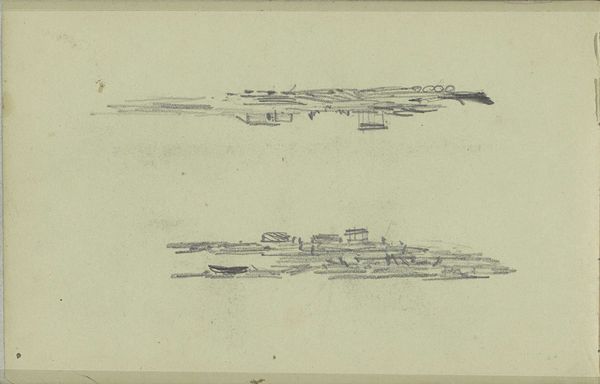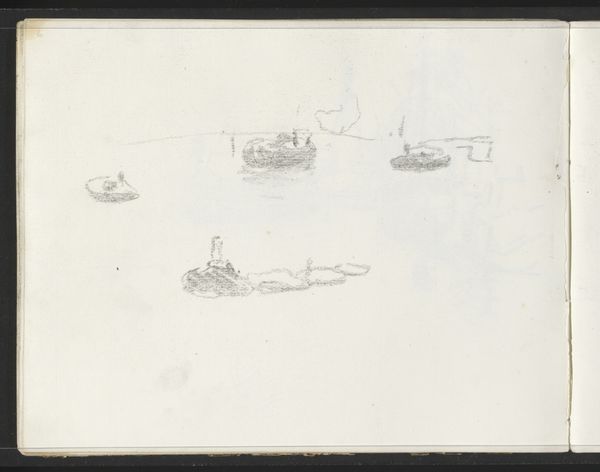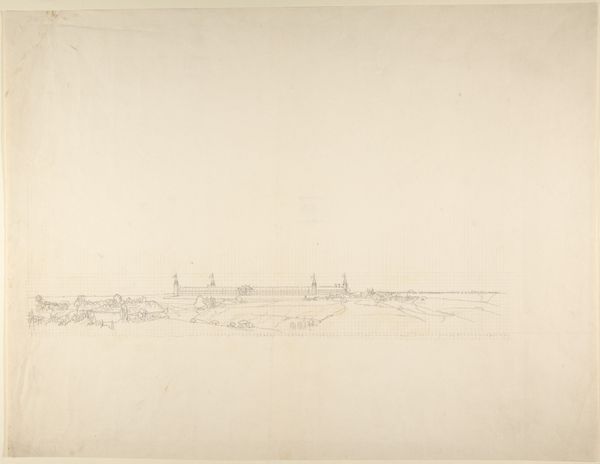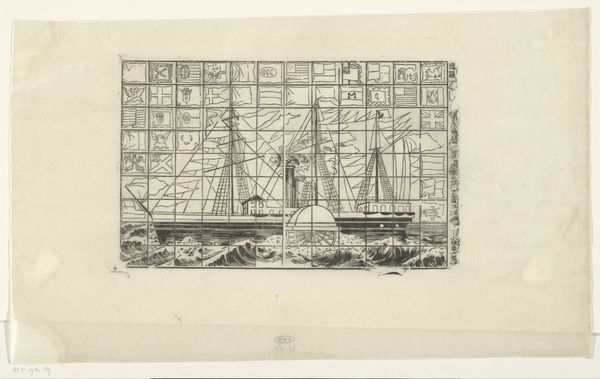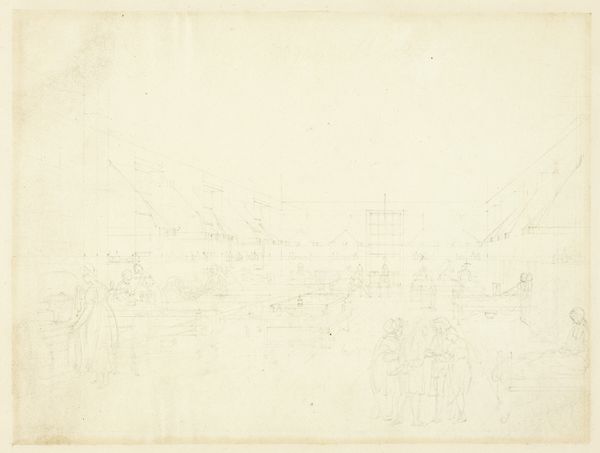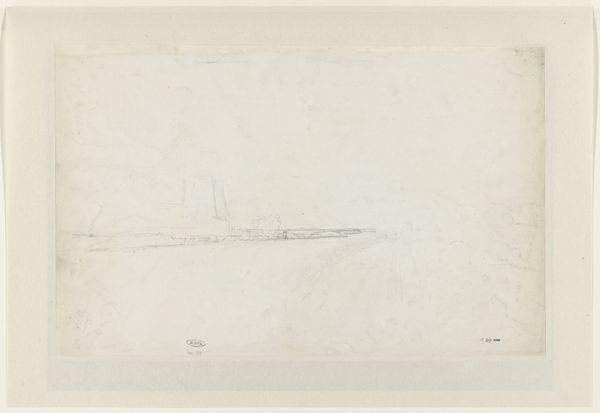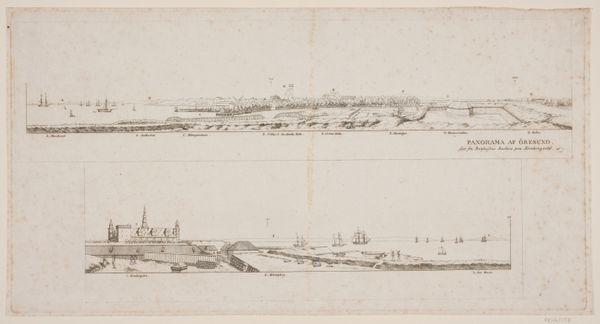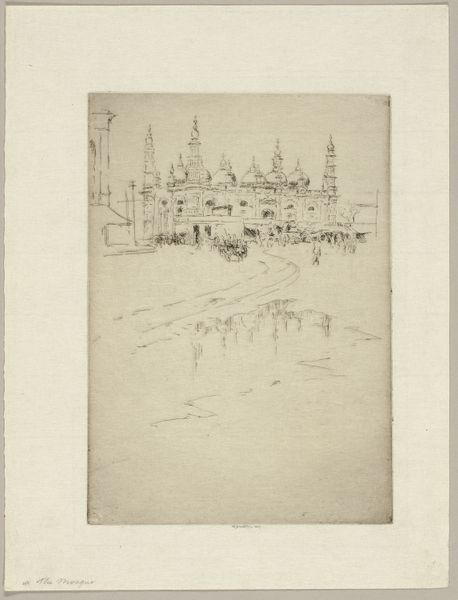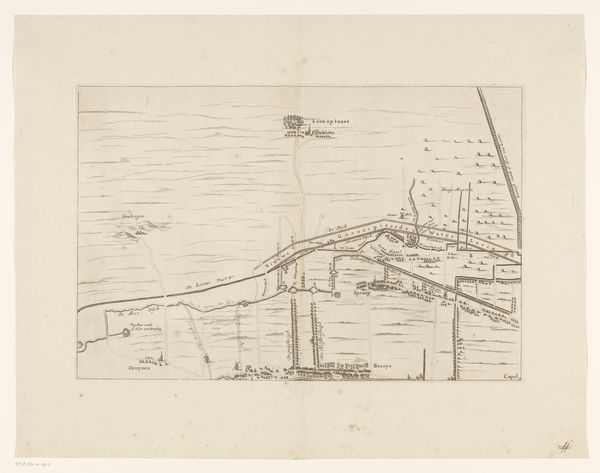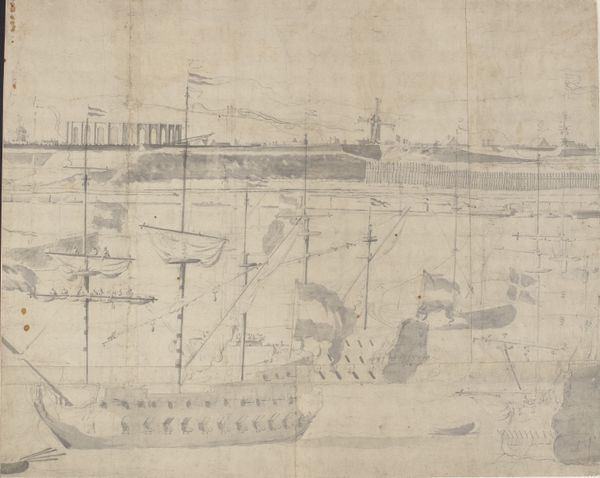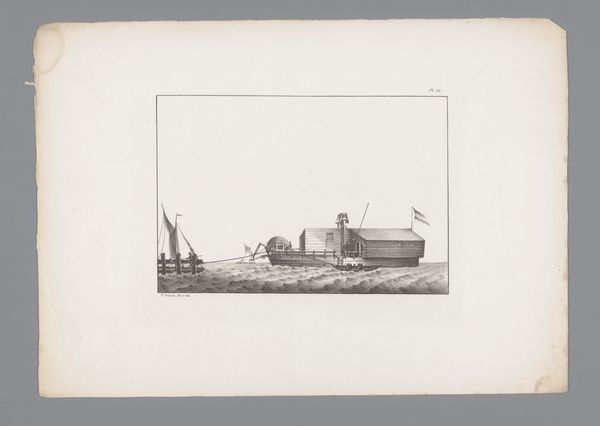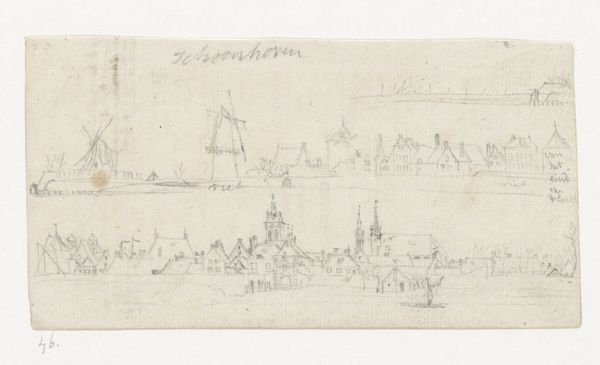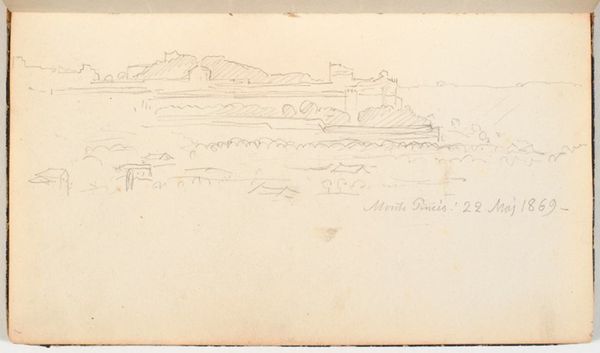
drawing, paper, pencil
#
drawing
#
landscape
#
paper
#
pencil
#
cityscape
#
history-painting
#
watercolor
Dimensions: overall: 22.9 x 30.5 cm (9 x 12 in.)
Copyright: National Gallery of Art: CC0 1.0
Editor: So, this drawing, called "Tile," made between 1935 and 1942 by A. Zimet, looks like a historical depiction of New Amsterdam. It’s crafted with pencil, drawing and perhaps some watercolor on paper to emulate an antique tile. It’s interesting how Zimet is evoking a handcrafted object. What's your read on it? Curator: Well, considering the tile format, let’s consider it through the lens of its production and its relationship to the social context of craft versus art. This is not simply a drawing *of* a tile, but perhaps a comment on the labor and materials involved in tile production and how that relates to the more traditionally valued medium of drawing. Think about the implied mass production, the history of decorative arts, versus the supposed uniqueness of fine art. What is Zimet telling us by flattening history into a utilitarian and decorative form? Editor: That's a really interesting angle. I was thinking about the imagery itself - the ships, the windmill, the settlement... Is Zimet perhaps glorifying the Dutch colonial project? Curator: Or, is it documenting that the transformation of raw materials through labor to create that very colonial wealth? The materials—the ships made of timber, the bricks from the land for houses, even the tiles themselves—all speak to a resource extraction that powered the colonial engine. It’s not just about *what* is depicted but *how* it’s depicted, the very material conditions enabling such depiction. Consider where Zimet chose to delineate individual “tiles” suggesting possible breakage or imperfections within a standardized format and how the grid both unifies the design yet also interrupts it, almost echoing how that engine of wealth extracted its pound of flesh at any cost. Editor: So, by mimicking a tile, the artwork encourages us to reflect on these colonial actions of raw resources being extracted that would typically go unnoticed. I hadn’t considered it that way. Curator: Exactly. By drawing our attention to the process, to the inherent materiality, Zimet encourages a more critical assessment of both the subject and its presentation. Editor: This really opens my eyes to the subtle but powerful ways artists can make social commentary through form and materials! Curator: Indeed! Now consider, what other everyday forms could we view through such critical lenses?
Comments
No comments
Be the first to comment and join the conversation on the ultimate creative platform.

